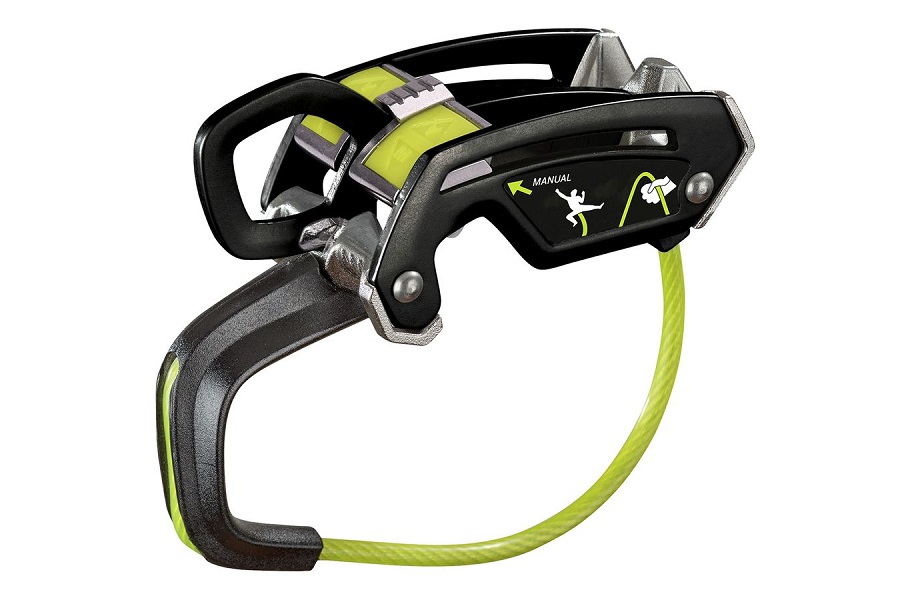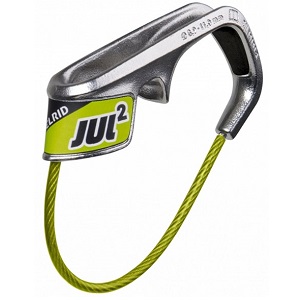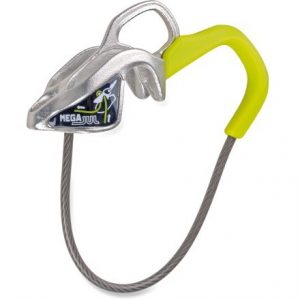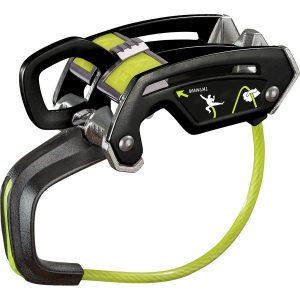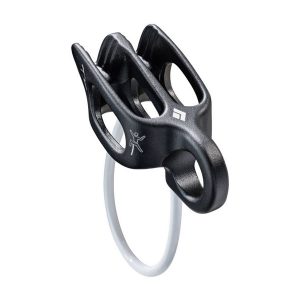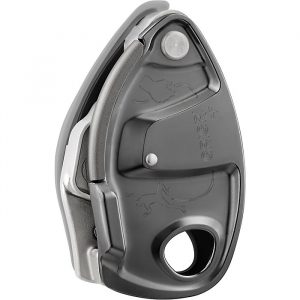In this day and age, choosing belay devices can be a bit of a head-scratcher. Many gyms are requiring climbers to use assisted braking devices, but many people still prefer using ATCs for outdoor climbing. There isn’t a device that is proficient at all styles of belaying on the market yet, and no one wants to spend lots of money on multiple belay devices.
Luckily, Edelrid is making headway on this predicament with the Giga Jul: a device can be both assisted-braking or tubular braking.
Giga Jul’s Main features and benefits
Let’s discuss the Giga Jul, as it is initially a little complicated. At a quick glance, it looks similar to a large version of Edelrid’s Mega Jul
. However, the brilliance of the Giga Jul is having a device that can be configured to use tubular braking—using the friction of the device, like an ATC, to catch a fall—or using assisted braking to catch your climber. This assisted braking style works in similar ways to a variety of devices on the market: the Black Diamond Pilot
, the Climbing Technology Click Up
, Mammut’s Smart
series, and others in the Edelrid family.
To achieve both styles of catching falls, the Giga Jul has a sliding plate in the middle of the device. It is best to spend some time familiarizing yourself with which direction is assisted braking and which is non-assisted braking. Simply put though, if both the thumb-catch on the device and the sliding plate are closer to you, then it is in tubular braking mode. Rotate the device 180 degrees and move the sliding plate closer to you again and it will be in assisted braking mode.
Other features of the Giga Jul include an anchoring hole to belay in guide’s mode and a small release hole to lower in guide’s mode. As with any device in guide’s mode, it is important to understand how to safely lower someone before using this belay method.
Edelrid Giga Jul vs Megal Jul comparison
Personally, I believe the best comparison to make for the Giga Jul is with the Mega Jul, which I view as its closest competitor. The Mega Jul is a device full of flaws, in my opinion. It doesn’t feed slack well, it doesn’t lower well, rappelling with it in both brake-assisted and non-brake assisted modes is confusing, as is setting it up for and belaying in guide’s mode.
The Giga Jul has made many great improvements to these functions. In brake-assisted belay mode, giving slack is much more efficient and fluid. Catching falls is not compromised in spite of being more efficient, and lowering is easier as well. I did find, as with the Mega Jul, that belay gloves help significantly with lowering climbers, especially since the rope is practically rubbing over your thumb as you lower.
Overall, however, the entire belaying process feels smoother with the Giga Jul, perhaps because of the larger size.
Non-assisted brake mode for rappelling with the Mega Jul was confusing. It always took me about half a minute to figure out how to load it properly and teaching a high school mountaineering team how to do this was near impossible. (I ended up making them all buy ATCs due to the frustration of self-rescue with a Mega Jul, since the Giga Jul was not on the market yet.)
Especially with the small size of the Mega Jul, loading the ropes into the device was a struggle. The Giga Jul, being much larger in size, is easy to load. Setting up the device properly is also easier, as you simply set it up as you would to belay in non-brake assisted belay mode. Simply put, it is like comparing rappelling with an ATC to rappelling in non-brake assisted mode on a Mega Jul. Obviously the ATC (and the Giga Jul) will win.
Rappelling in brake-assisted mode, both for a Mega Jul and Giga Jul, is something I will never enjoy and do not recommend. Especially with fatter ropes on a free-hanging, 35-meter rappel, disengaging the brake assist is a struggle. I do not recommend ever doing this, having done this with both devices. It took much longer than normal rappelling would. I highly suggest solely rappelling with a backup instead, as it is much easier to tend to as you descend.
While belaying and rappelling are definitely improved with the Giga Jul, the best change is with belaying in guide’s mode.
Whenever I belayed in guide’s mode with a Mega Jul, unless using ultra-skinny half ropes, I would yell expletives and get an unwanted shoulder workout. It was not fun and had me dreading every belay anchor I approached.
Additionally, set up always lead to confusion wondering how the device is supposed to be attached to an anchor. The Giga Jul is a thousand times easier to feed slack through in guide’s mode and is only slightly more difficult than an ATC-Guide to attach to an anchor, having to pay attention to the sliding plate in the middle. Like the Mega Jul, feeding a sling through the release hole to lower a climber in guide’s mode is difficult, but that is a slight price to pay for not being disgruntled whenever belaying your follower.
Edelrid Giga Jul vs ATC-Guide & GriGri comparison
If compared directly to an ATC-Guide or a GriGri
, the Giga Jul falls a little short in both departments. It doesn’t give slack quite as easily as both devices, and it is fairly heavy, weighing 100 grams (roughly 70 grams little less than a GriGri). However, for the same weight, you get two different styles of belay devices and the Gigajul is much cheaper than a GriGri.
Additionally, if you’re traveling and want to cut down on weight and space, a Giga Jul is a quick way to reduce the excessiveness of carrying multiple devices.
To get a belay device that does it all in an efficient and small package makes the Giga Jul thoroughly worth considering.
Related Posts
- Gear You Ought to Know: A Review of Edelrid’s Ohm Assisted Braking Resistor
- A Look at Black Diamond’s ATC Pilot Belay Device
- Gear You Ought to Know: Grivel’s Twin Gate Carabiners
- The Internet’s Best Climbing Gear Deals

